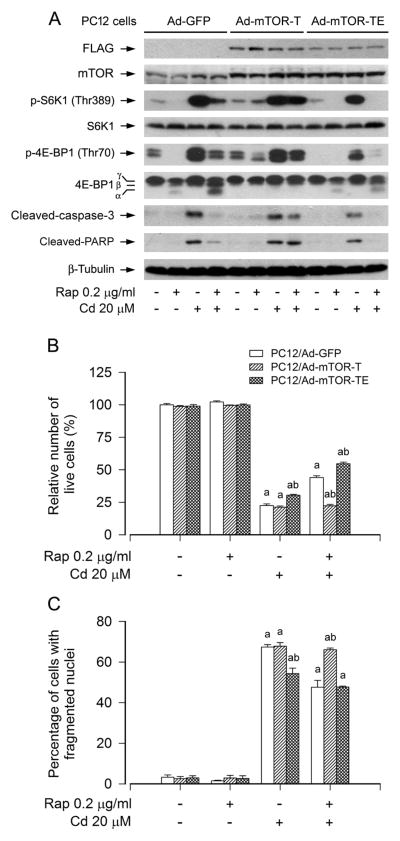Fig. 2.
Rapamycin prevents Cd-induced neuronal cell death in an mTOR kinase activity-dependent manner. PC12 cells, infected with Ad-mTOR-T, Ad-mTOR-TE, and Ad-GFP (as control), respectively, were pretreated with rapamycin (Rap, 0.2 μg/ml) for 48 h, followed by exposure to Cd (20 μM) for 4 h (for Western blotting) or 24 h (for live cell assay and DAPI staining). A) Ectopic expression of FLAG-tagged mTOR-T, but not FLAG-tagged mTOR-TE or GFP, rendered resistance to rapamycin inhibition of Cd-induced phosphorylation of S6K1 and 4E-BP1 in PC12 cells. The blots were probed for β-tubulin as a loading control. Similar results were observed in at least three independent experiments. B and C) Expression of mTOR-T, but not mTOR-TE or GFP, resisted to rapamycin’s prevention against Cd-induced B) cell viability reduction and C) apoptosis in PC12 cells. Results are presented as mean ± SEM (n = 5). a p < 0.05, difference with control group; b p < 0.05, Ad-mTOR-T group or Ad-mTOR-TE group versus Ad-GFP group.

